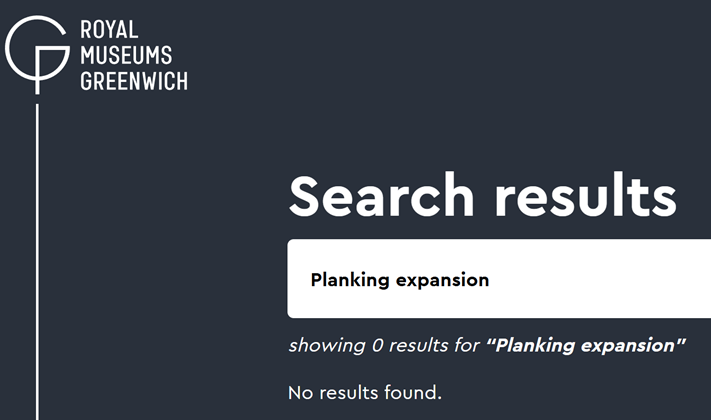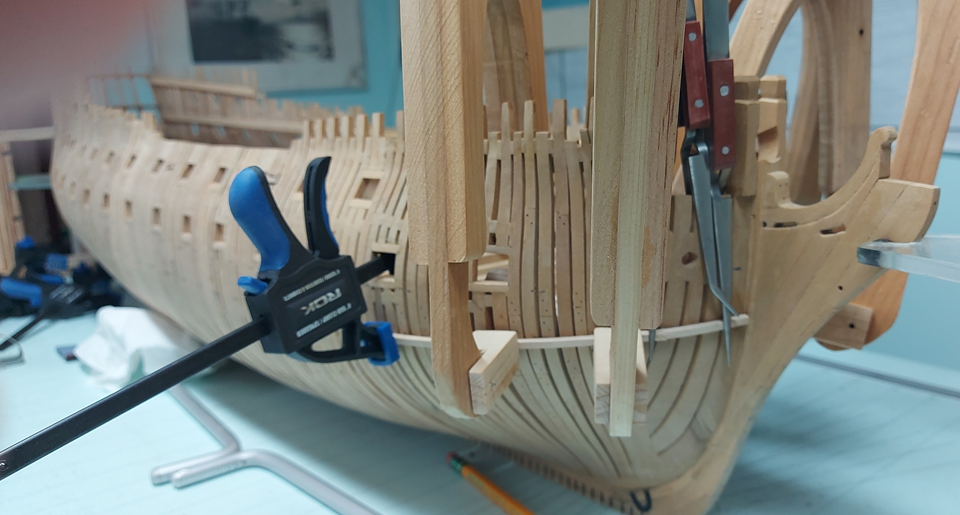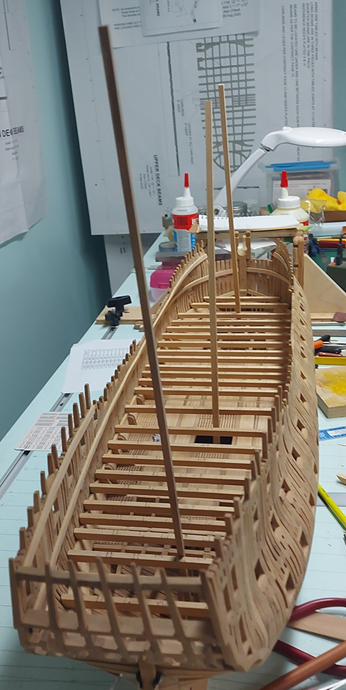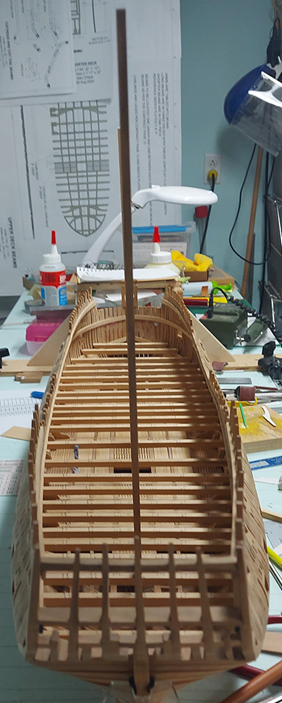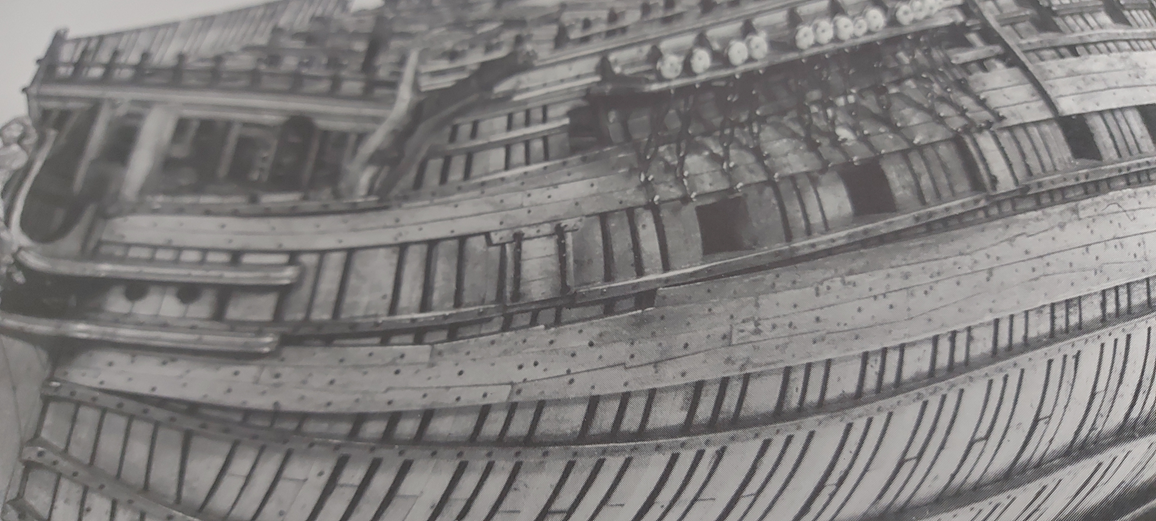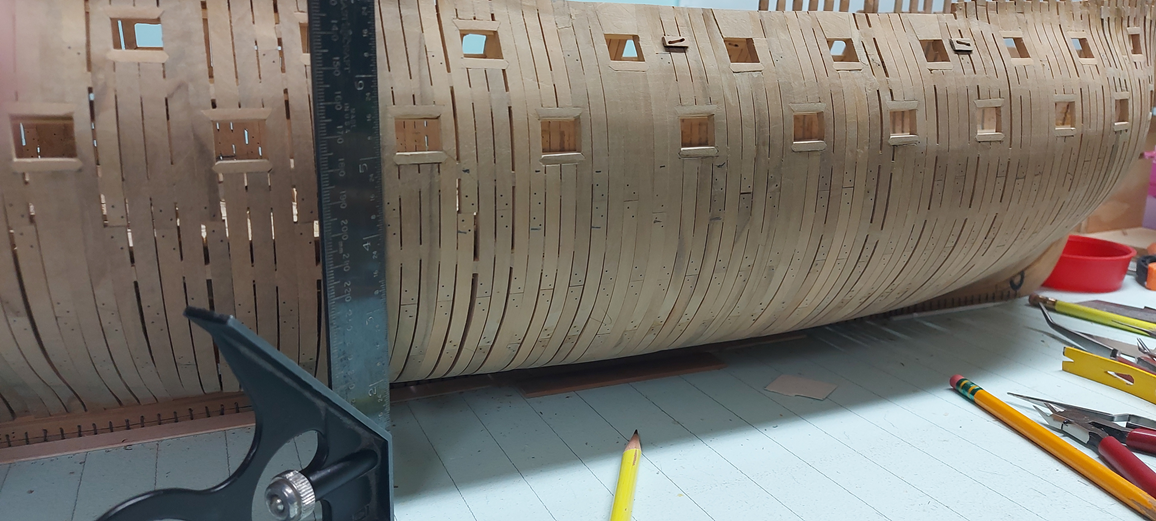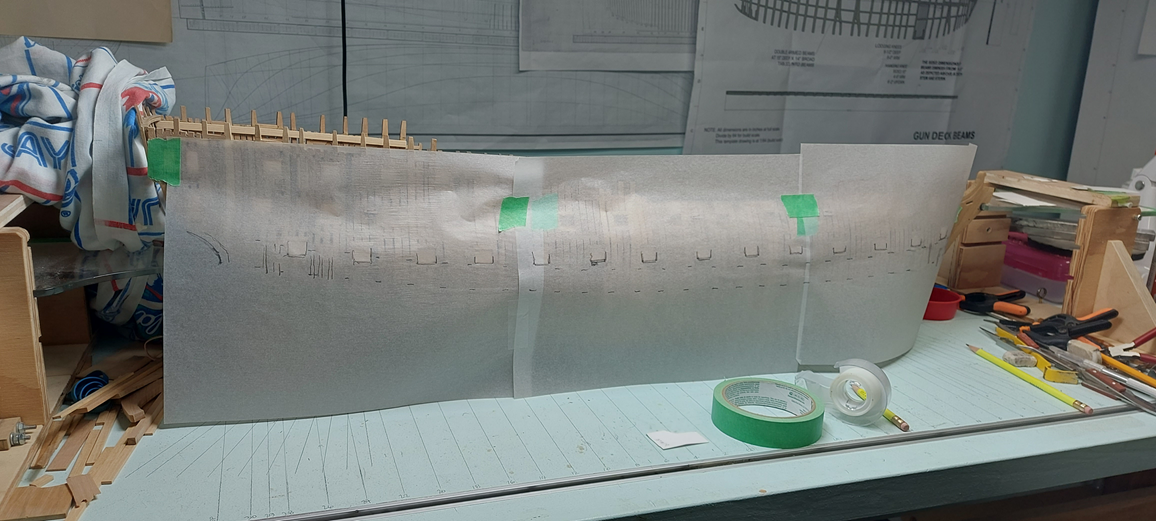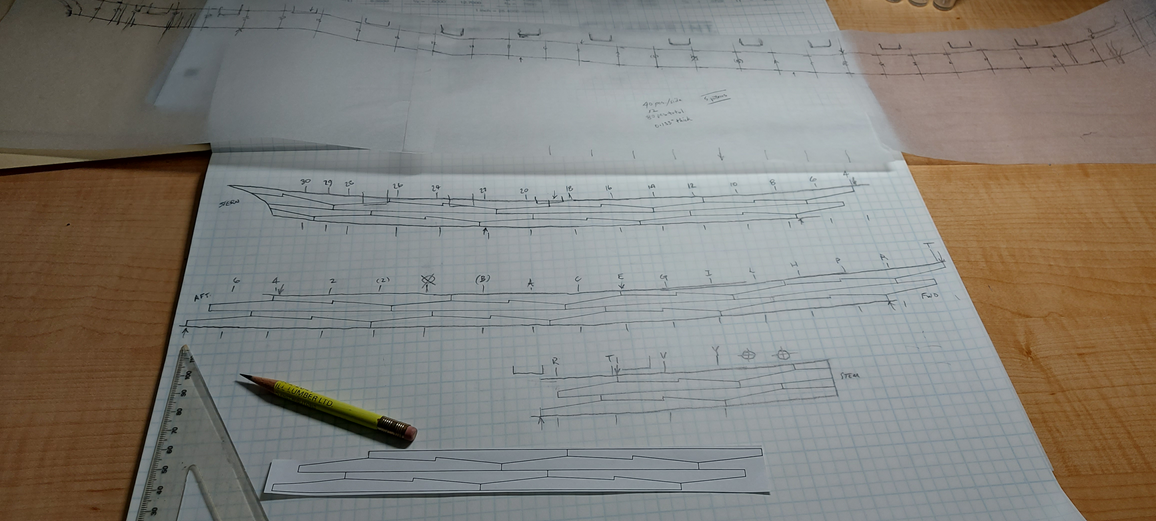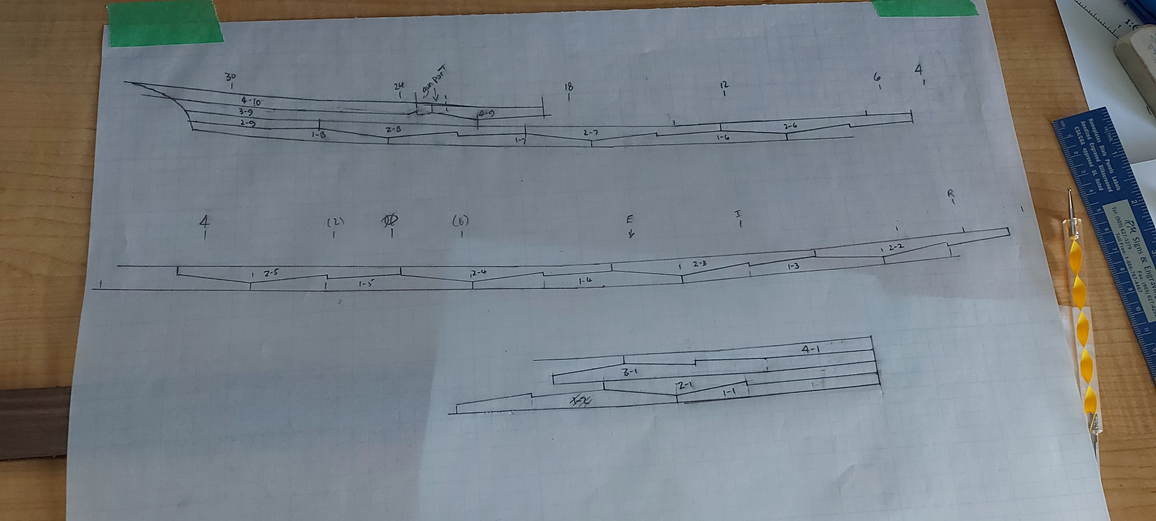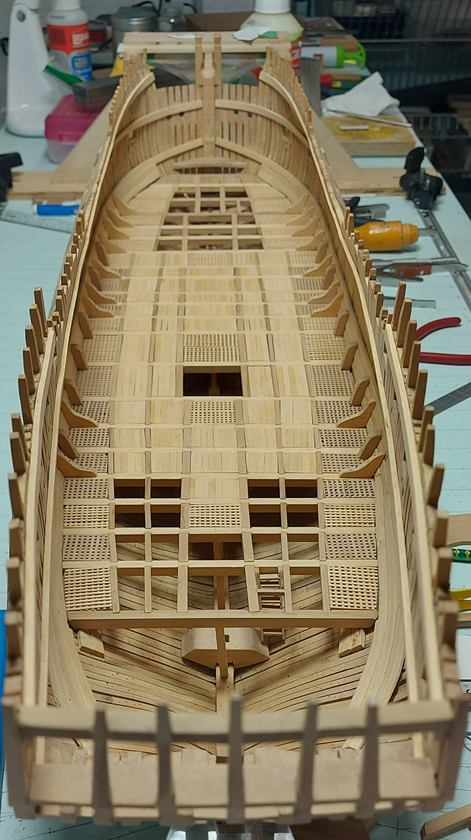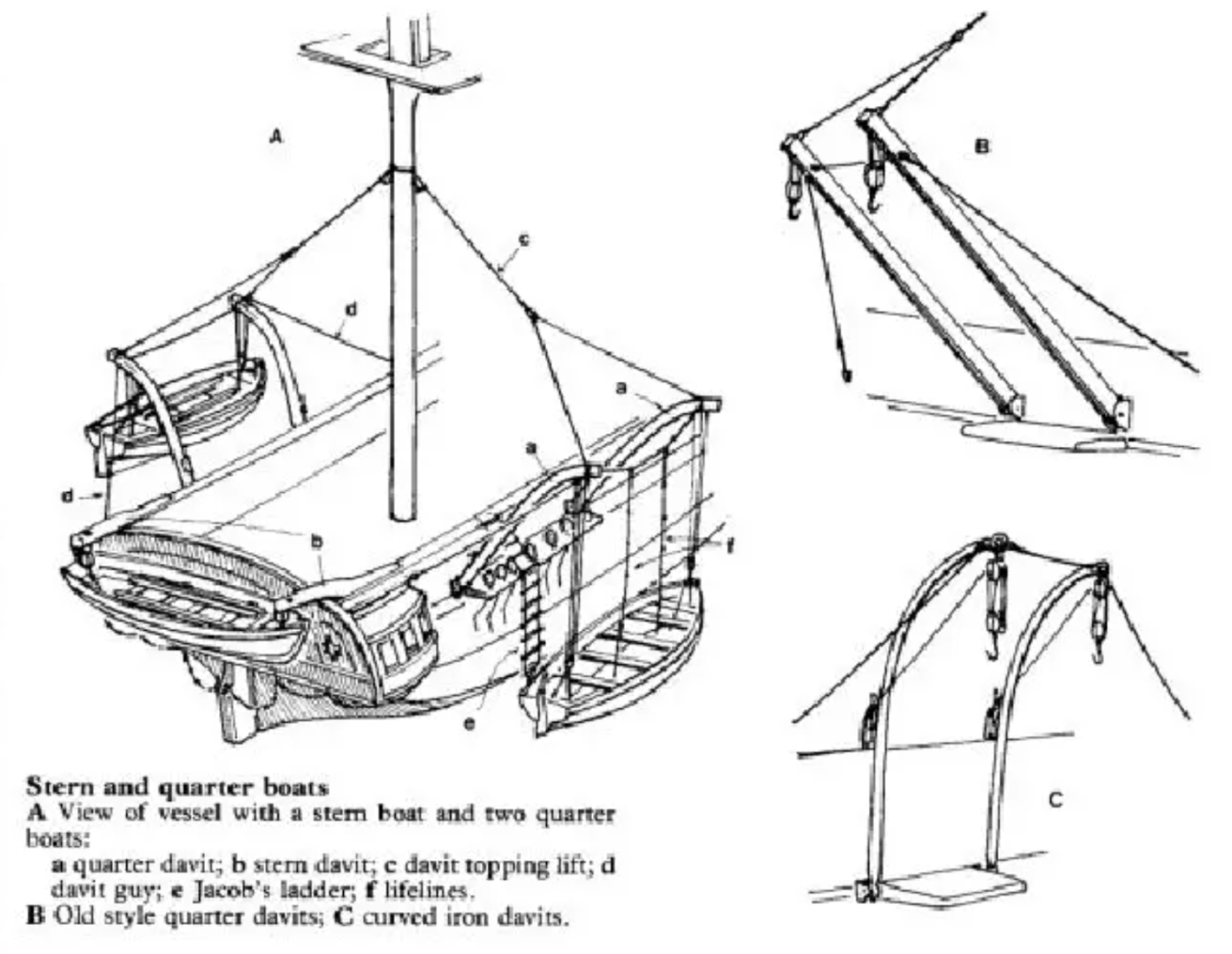-
Posts
2,851 -
Joined
-
Last visited
Content Type
Profiles
Forums
Gallery
Events
Everything posted by AON
-

Leon by Doug McKenzie - 1:300 - BOTTLE
AON replied to Doug McKenzie's topic in - Build logs for subjects built 1851 - 1900
holy sh.....izam, that looks complicated! If you could figure that out I don't think you need any luck. 😉 -
The Berwick stem main wales length ratios are somewhat similar to what I had but they show a hook in the shortest piece... no straight runs. The Berwick stern shows the bottom most piece being quite long. Queen Charlotte stem are longer straighter runs, and the stern bottom most piece is short. Could they be more opposite? The double hook shape is growing on me. The longer pieces translate to fewer to make and possibly fewer errors(?). The straight runs at the stem and stern help with fitting and are a cleaner finish at both ends. above - Berwick stem above - Berwick stern above - QC stem above - QC stern Back to the drawing board... I mean computer program!
-
Druxey I have one reference that states 14 feet long, and yet another reads 20 feet. The contract doesn't mention a length. Where does 24 feet come from? I have one reference that shows a single hook (simpler so I was going with that) but steels shows double hooks, as does the image of the Bellona. I have a feeling my scrap bin is about to grow bigger. If I have to lay it out again, at 24 foot length, and I've already practiced with one hook, I might as well dive in and do the double hook. Oh, and I tried to search the RMG web site and search 'planking expansion' for examples. This is what I got... Alan
-
Well that was a lot of fun (he says sarcastically). After a longer stare at photos and getting some priceless advice from David, I've reworked my layout of the main wales to have long straight runs at the stem post and stern. The hook on all my two lower runs was backwards so they need to be remade. I've separated the "good" from the "bad" and am re-tracing the "need to remake" pieces now. I'm going to need more wood prepared for this. So many lessons to learn! Here is the new pattern. The earlier version has been removed so no one else needs to follow that path of horrors. (***All: I had images here but deleted them as I will be laying it all out all over again per post 1771)
-
Thanks Druxey. Reviewing the damage report. I suppose that is what the eraser on the end of the pencil might be for! Luckily I was distracted dealing with a call centre this afternoon regarding a cancelled points card due to "non-usage" even though I had a receipt from last week with an accumulated points update report on it. They surely don't like to veer from the prepared script. It was like pushing a rope up hill. I did eventually get my card resuscitated and the points reinstated. I didn't get downstairs to glue any pieces on. Indeed, God works in mysterious ways!
-
It has been a couple weeks... I cut all the jigsaw pieces and then fitted them together on top of the plan I made. It required considerable fiddley adjustments to all pieces... sort of akin to chasing your own tail. Here is a photo of a group I was working on... right side goes against the stem post. Then I had to decide where to start. David Antscherl suggested starting at dead centre in his four volume series The Fully Framed Model (aka TFFM). I was concerned that if I was off a bit I'd not have adequate length to reach the stem post. So I've decided to start at the stem post and work back. While dry fitting to the stem post I noticed the thickness of the wales was an issue. Then I read in TFFM that they need to be tapered to fit to the stem post. I tried steaming the forward most lower piece to bend it. Then I tried soaking in boiling water. In each case I couldn't quite get the curve quite right due to spring back... and the wait for it to dry adequately was unsettling. In the end I decided to use my soldering/wood burning pen to dry bend it. It has a round bar like shaft extension that heats up. The nibs screw into it but I left them off and used the bar alone. No spring back, and results are instantaneous. David suggested I install a guide strip of wood at the bottom to help keep the bottom row aligned at the proper elevation. So after some hesitation... I mean, thinking things through, I began installing the guide strip from the stem post and back on both sides (port and starboard). A short piece for now with a few dabs of glue and a number of clamps. I'm ready to begin. I'll post after I have a few installed and see how well I've managed to do. Why is beginning something you've never done before so difficult? It's not like I'm going on my first date here. I've learnt to chuck my fair share of first, second, and third tries. Oh well...
-
The finish is looking pretty darned good! Well done. The next project is a good looking tug. Let me know when you start the build log as I would like to follow along on your journey.
- 69 replies
-
- Miss Adventure
- Model Shipways
-
(and 2 more)
Tagged with:
-
Almost back to where I was before I tore out the orlop and gun deck. Gun deck beams cut, edges softened (sanded), tacked in place, marked for carlings. Centre alignment double checked with some square stock set in the three mast steps. This was eye balled from the transom to the bow. Looks acceptable. I also double checked the deck height with a 32 Pdr and my 4" thick deck planks will need to be slightly thicker... which is better than thinner I suppose. The height between decks looks good with 3D figures. I plan to have at least this fiddler (me) on the orlop with his seaman's chest. I also have my wales traced onto the black walnut ready to be cut out. I numbered the pieces so hopefully I don't get mixed up.
-
Thanks. The neat thing is the back is glass so I can take it down and look at the other side as well.
-
I took the Admiralty workshop offered by David years ago and it turned out wonderfully! I have it framed and hanging in my workshop as a reminder of a weekend well spent.
-
Before starting on the gun deck (again) I decided to install the wales. Per the contract the wales are hook and butt and a photo of a model of the Bellona shows this quite clearly. I drew some 20 foot long hook and butt planks at 1:64 scale using DraftSight to make a straight plank template. (The pattern drawing that was here has been removed. You can find the updated drawing posted on 6 Sept 2025) I measure off the NMM plan and converted the measurements from 1:48 to 1:64 scale. These were transferred to my timbers. I then attached sheets of tracing paper to the model and transferred these marks to it along with some other details (gun port openings, hawse pipes holes, butt to stem post and end at the aft). This curvature was then transposed to transparent graph paper. The printed straight plank template was cut out and slipped below and my curved templates were traced onto the graph paper. I will be using black walnut for the wales. This stock will be cut and sanded to thickness and then two sheets rubber cemented together to allow me to cut both individual identical port and starboard planks at one time. I cannot use my black carbon paper to trace these shapes as it will be difficult to see the outline on black walnut so I’ve ordered a package of white carbon paper for the job! Safety note: Black walnut sawdust may be toxic to some, so proper precautions must be taken when cutting and sanding. Some individuals may experience respiratory irritation if exposed to large amounts of black walnut sawdust Like everything else on this build... this will be my first attempt, so wish me well.
-
I completed my rebuild of the orlop deck… or so I thought. The grating runs along both sides and at the bow. The lodging or (horizontal) deck beam knees are installed as are the standard (vertically upwards) knees. I decided to add the top end of the futtock riders… faux riders. To hide the missing detail I installed the flush orlop deck planking over the area. Planking either rested in a notch cut into the beams or on a separate support ledge. I decided on the latter as it was easier then cutting more notches. I was able to re-use the three stairs I had built, two at the bow and one at the stern. The one detail I need to remake is the very last aft grating on both sides. I had decided to keep the support ledgers fore and aft and the battens port/starboard… but for some unknown reason I skewed the last aft set. These will be torn out and made over.
-
I found the second or lower of your images on Pinterest posted by Niko Henrichs. No details or attributes for the scanned image. Without that information I would hesitate to make a decision. I await input from someone with the knowledge.
- 27 replies
-
- capstan
- small boats
-
(and 1 more)
Tagged with:
-
- 27 replies
-
- capstan
- small boats
-
(and 1 more)
Tagged with:
-
Could you provide the sources for each figure please. I've only seen the one on top, not the one below. I haven't any expert knowledge with this subject and so, am interested in the responses
- 27 replies
-
- capstan
- small boats
-
(and 1 more)
Tagged with:
-
As important, could someone explain how the anchor could be raised (man handled) in such a short distance between the hawse pipes and the forward grating when the capstan is way back aft? Seriously, I'd like to know. I don't understand.
- 332 replies
-
- Harpy
- Vanguard Models
-
(and 1 more)
Tagged with:
-
Looking at the location of the capstan in image 1588a I tend to agree with you as to where the anchor cable ran utilizing a vyol (viol) and nippers. The cable would be coiled below in a heaping stack, one to the port side and one to starboard (or larboard) and it involved a major portion of the crew over a good portion of the day to accomplish the feat.
- 332 replies
-
- Harpy
- Vanguard Models
-
(and 1 more)
Tagged with:
-
I simplified my description some... left out steps. I mark them insitu, remove them, score the pencil marks on the fore/aft face, chisel with the grain from port to starboard then pass the file to ensure flatness. My carlings and ledges are cut square to length then with my bench sander support tilted at an appropriate angle, I sand the ends to fit the notches. I had tried cutting them on the model as I believe David Antcherl and a number of others do and it was a disaster. I tried cutting them off the model, on the bench, and they split on me a number of times, so I gave up! How I do it has extra steps but it works for me. You do you!
- 967 replies
-
- hahn
- oliver cromwell
-
(and 1 more)
Tagged with:
-
I experienced the same cracking and splitting trying to notch for carlings. Ended up scoring and sanding a chamfer instead of a notch. I see people do it but they are obviously much more talented then me.
- 967 replies
-
- hahn
- oliver cromwell
-
(and 1 more)
Tagged with:
-
You need a helper you can blame it on! 😏
- 69 replies
-
- Miss Adventure
- Model Shipways
-
(and 2 more)
Tagged with:
-
I don't understand why it applied so unevenly.
- 69 replies
-
- Miss Adventure
- Model Shipways
-
(and 2 more)
Tagged with:
About us
Modelshipworld - Advancing Ship Modeling through Research
SSL Secured
Your security is important for us so this Website is SSL-Secured
NRG Mailing Address
Nautical Research Guild
237 South Lincoln Street
Westmont IL, 60559-1917
Model Ship World ® and the MSW logo are Registered Trademarks, and belong to the Nautical Research Guild (United States Patent and Trademark Office: No. 6,929,264 & No. 6,929,274, registered Dec. 20, 2022)
Helpful Links
About the NRG
If you enjoy building ship models that are historically accurate as well as beautiful, then The Nautical Research Guild (NRG) is just right for you.
The Guild is a non-profit educational organization whose mission is to “Advance Ship Modeling Through Research”. We provide support to our members in their efforts to raise the quality of their model ships.
The Nautical Research Guild has published our world-renowned quarterly magazine, The Nautical Research Journal, since 1955. The pages of the Journal are full of articles by accomplished ship modelers who show you how they create those exquisite details on their models, and by maritime historians who show you the correct details to build. The Journal is available in both print and digital editions. Go to the NRG web site (www.thenrg.org) to download a complimentary digital copy of the Journal. The NRG also publishes plan sets, books and compilations of back issues of the Journal and the former Ships in Scale and Model Ship Builder magazines.



.png.3a1a42b2497aca8f265464e3ad967823.png)
.png.26e6da293bbffcaec3017de888fb414c.png)
.png.2ed364bb652ba3b0c25ae37666391bad.png)
.png.743590ae1e91f7e8d06a3b80e3c04484.png)

